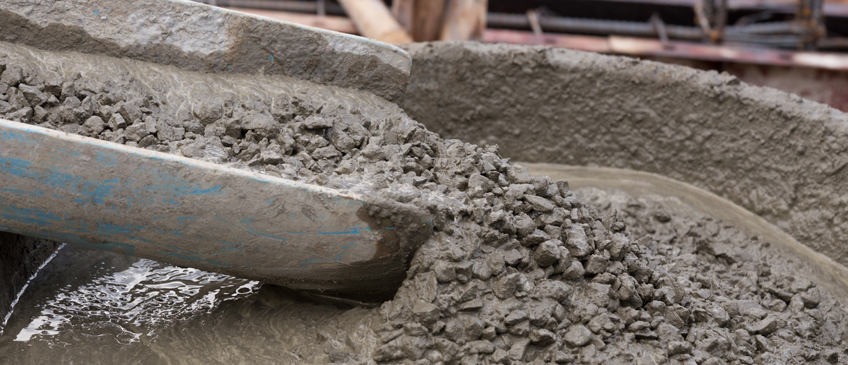Date: September 2, 2014
News - Is Water Good or Bad in Concrete?

Trick question! The answer is both. Water is needed, but after the need is met, it begins to hurt the concrete.

There are two types of water in concrete: water of necessity (also known as water of hydration) and water of convenience.
Water of Necessity
The main ingredients of concrete are fine aggregate (sand), coarse aggregate (gravel or stone), cement and water. When water comes in contact with cement, it begins a chemical process called hydration. This process forms crystals that bind the coarse aggregates together. Hydration is how concrete gains its strength. A certain amount of water is required to full hydrate the cement so that all the cement is used to bond the concrete mix together. This is commonly referred to as a water to cement ratio. The ratio is calculated by taking the weight of the water and dividing it by the weight of the cement. The minimum water to cement ratio required for hydration is a 0.28. Any additional water is water of convenience.
Water of Convenience
While a low water to cement ratio is optimized for performance, the mix is very stiff and difficult to work with. It has what we call a low slump. That is a measure of how far a cone of wet (or plastic) concrete will fall when the cone is removed. A low slump of an inch is very stiff, whereas a high slump of 6 inches would flow quite easily. Think of it like a pancake batter. If the pancakes are too stiff, adding more milk to make it flow more so it is more workable. Unfortunately, that has a significant down side.
How Does Water Hurt Concrete?
So now we know why we need water for hydration, what is the down side to adding as much water of convenience as we can? All of the excess water that is in the mix will need to leave the concrete in the form of what is called bleed water. This has negative effects. Adding just one gallon of water to a cubic yard of concrete will:
- Increase the slump about 1 inch
- Decrease compressive strength about 200 to 300 psi
- Increase shrinkage potential by as much as 10% (increased cracking) – Think about how the concrete is changing size while all that water bleeding out at the same time it is trying to get hard.
- Decrease resistance to de-icing salts
- Decrease wear resistance to traffic
- Increase dusting and other surface defects
- Increase time needed to cure the concrete
How Can I get the Good Parts of Water without the Bad?
The good news is that you can have your cake and eat it too! There are chemical admixtures called normal water reducers and high range water reducers that we can put in the concrete. Concrete designed for slumps greater than 5 inches typically will require the use of a high range to avoid having a high water cement ratio. Depending on the required slump, these water reducers will increase the slump and fluidity of the concrete without extra water and all its negative effects.
It’s important to know how much slump you want with your concrete when you order it, so we can help you pick a mix optimized for your needs so you don’t feel that you have to add water at the job site and decrease the quality of your concrete.
Other select news articles from 2014
- Effects of Salt on Concrete
- Chaney-Scofield Stamp Class
- Class A and Class B CDL Driver Positions Available Now!!
- Chaney Aggregates Team Wins MTBMA Safety Awards
- Two Excellence in Concrete Projects Recognized
- Customer and Employee Focus Leads to 6th Annual Workplace Award
- Roller Compacted Concrete Job Wrapping Up
- Is Water Good or Bad in Concrete?